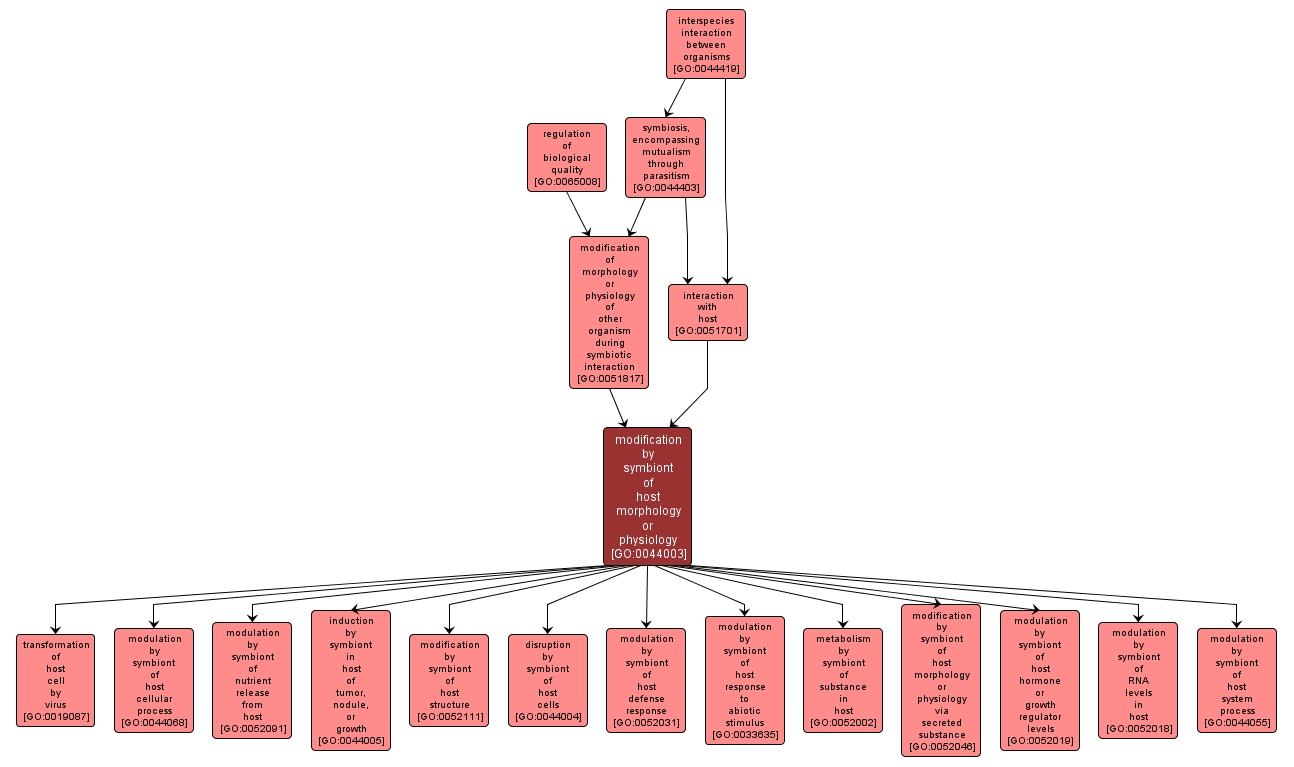GO TERM SUMMARY
|
| Name: |
modification by symbiont of host morphology or physiology |
| Acc: |
GO:0044003 |
| Aspect: |
Biological Process |
| Desc: |
The process by which an organism effects a change in the structure or processes of its host organism. The host is defined as the larger of the organisms involved in a symbiotic interaction. |
|

|
INTERACTIVE GO GRAPH
|














